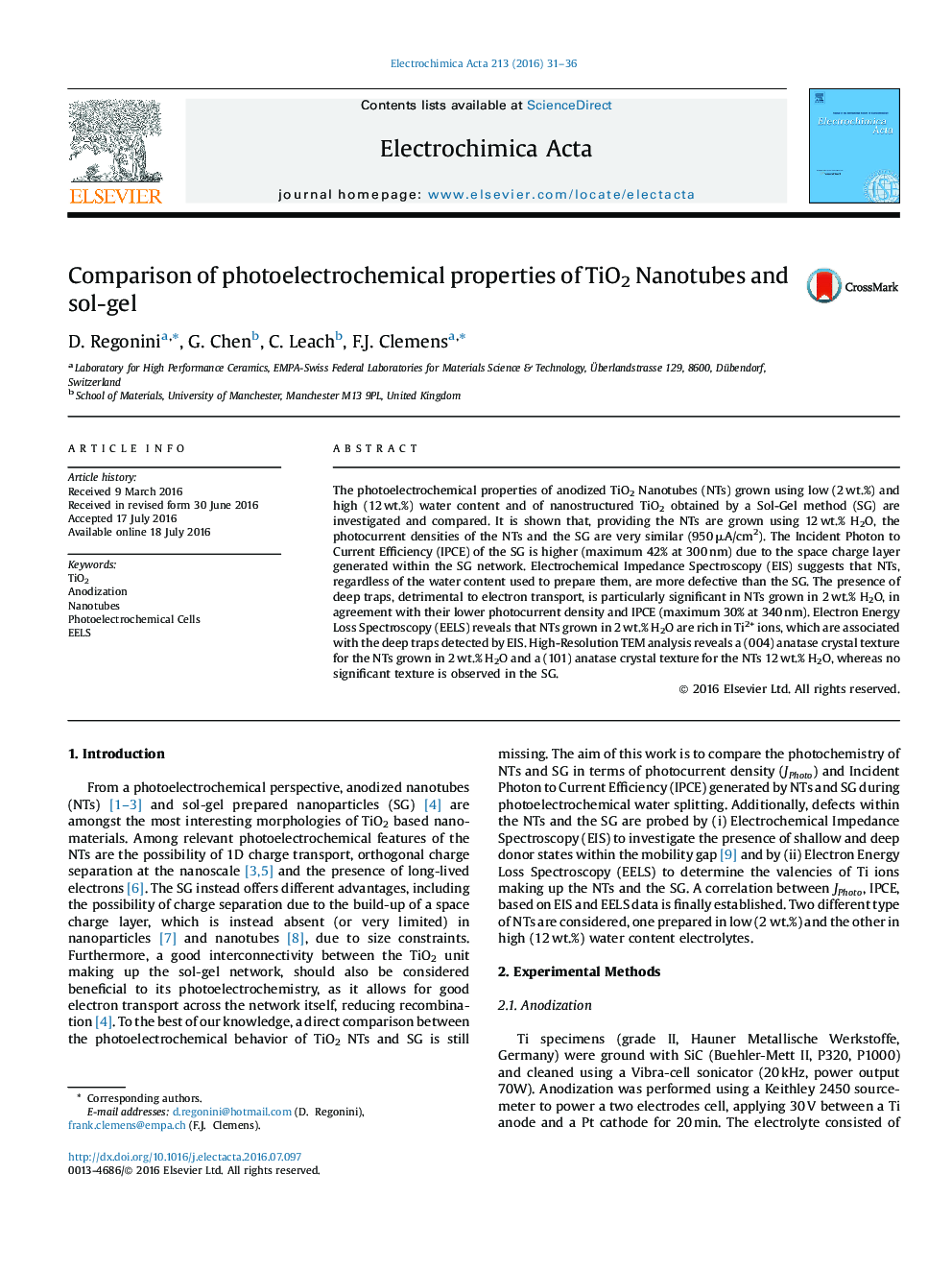| Article ID | Journal | Published Year | Pages | File Type |
|---|---|---|---|---|
| 6605477 | Electrochimica Acta | 2016 | 6 Pages |
Abstract
The photoelectrochemical properties of anodized TiO2 Nanotubes (NTs) grown using low (2 wt.%) and high (12 wt.%) water content and of nanostructured TiO2 obtained by a Sol-Gel method (SG) are investigated and compared. It is shown that, providing the NTs are grown using 12 wt.% H2O, the photocurrent densities of the NTs and the SG are very similar (950 μA/cm2). The Incident Photon to Current Efficiency (IPCE) of the SG is higher (maximum 42% at 300 nm) due to the space charge layer generated within the SG network. Electrochemical Impedance Spectroscopy (EIS) suggests that NTs, regardless of the water content used to prepare them, are more defective than the SG. The presence of deep traps, detrimental to electron transport, is particularly significant in NTs grown in 2 wt.% H2O, in agreement with their lower photocurrent density and IPCE (maximum 30% at 340 nm). Electron Energy Loss Spectroscopy (EELS) reveals that NTs grown in 2 wt.% H2O are rich in Ti2+ ions, which are associated with the deep traps detected by EIS. High-Resolution TEM analysis reveals a (004) anatase crystal texture for the NTs grown in 2 wt.% H2O and a (101) anatase crystal texture for the NTs 12 wt.% H2O, whereas no significant texture is observed in the SG.
Related Topics
Physical Sciences and Engineering
Chemical Engineering
Chemical Engineering (General)
Authors
D. Regonini, G. Chen, C. Leach, F.J. Clemens,
